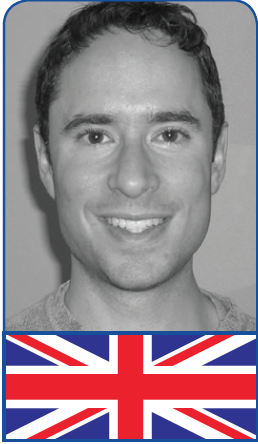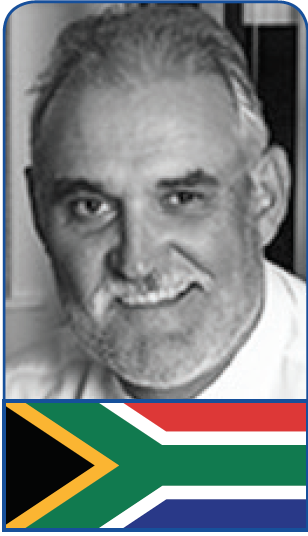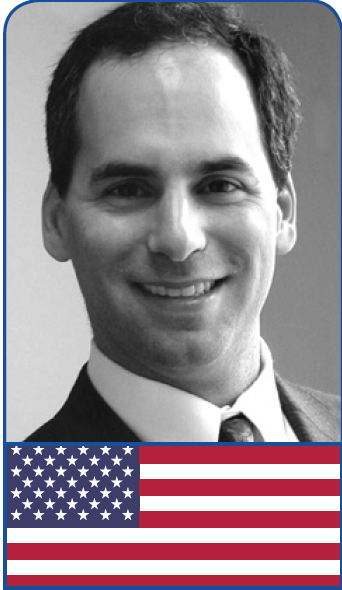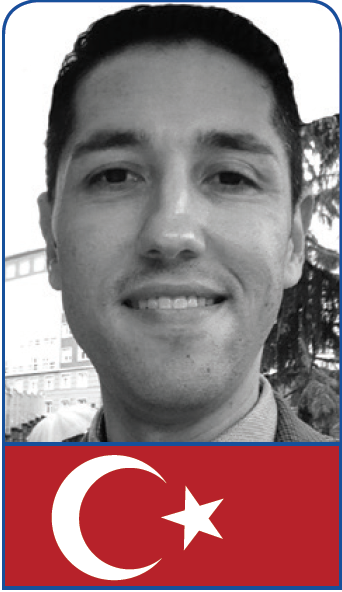United Kingdom

Allon Barsam, MD, MA, FRCOphth
LASIK volumes have been cut in half in the United Kingdom over the past 8 years. There are several reasons for this. One main reason is the amount of negative press that laser eye surgery has received in this country, primarily focusing on perceived poor quality practice by so-called high street or chain providers. Another reason is the poor state of the economy, including inflated real estate prices, which means that there is less disposable income available for elective surgery that is not perceived as medically necessary. Finally, greater awareness among both surgeons and patients of alternative techniques such as phakic IOLs and refractive lens exchange (RLE) using the latest generation trifocal, bifocal, and extended depth of focus IOLs has resulted in an increase in volume for these procedures, and, therefore, lower volume for LASIK.
AT A GLANCE
• Despite financial pressures and the economy, patients more so than ever are seeking out high-quality practices where the surgeons are perceived to be of a high caliber.
• There is still a group of LASIK candidates out there, including myopes who are too young or are waiting to get a better job or have a larger income before stepping forward for the procedure.
• Some ophthalmologists still use older laser technologies, and they offer low prices for LASIK that undercut the market and create the atmosphere of a price war.
• The main reasons that patients show continued interest in laser vision correction are the continual improvements in visual outcomes achieved and the steady decline in incidence of postoperative complications.
• Word of mouth is the strongest power in support of refractive surgery.
• The greatest harm to the market has come from bad information in the media and on the Internet about LASIK disasters and from competitors who badmouth the technology.
Interestingly, the high-volume, low-cost approach to LASIK has not proved to be successful in the United Kingdom. One major chain recently went out of business, and the others are struggling to keep themselves afloat. Despite the financial pressures mentioned above, patients more so than ever are seeking out high-quality practices where the surgeons are perceived to be of a high caliber. Therefore, while the chains have lost out on volume over the past 8 years, smaller practices and individual surgeons have seen increases in volume.
I believe that prospective patient education and an individualized approach to care by surgeons remain paramount in maintaining refractive surgery volume. Patients need to understand that, with the right surgeon using the right technology, they are almost certain to achieve superb visual outcomes. The vast majority of my patients report that their vision after LASIK is better than it ever was with either glasses or contact lenses. This makes it a positive, life-enhancing event for the patient—one that so many more patients could benefit from if only they knew what they were missing out on.
Spain

Jose L. Güell, MD, PhD
In preparing to write this piece about the state of LASIK volume in Spain, I took the opportunity to speak with some of my colleagues in this country. They all had opinions similar to mine, which is that the popularity of LASIK seems to go in waves, and, right now, we are in a relatively steady state that will continue for quite some time.
When I started to do LASIK in about 1991, I was one of the pioneers of the procedure in Spain. As you can imagine, at that time, there was a LASIK boom. We were already in the midst of a boom for PRK, but LASIK created much better expectations among both surgeons and patients, and the result was heavy interest and widespread acceptance. Since then, the popularity of LASIK has gone down and up several times in waves. Today, we are not in a trough, but we are not at the same high levels we saw in the early boom times.
The level of acceptance does not seem to be an economic issue because in some institutions—for instance, my institution, the Instituto Microcirugía Ocular in Barcelona—we are still charging more or less the same fees that we were 5 years ago. We have had the same price structure since the beginning of our experience with the procedure.

Of course, as in the United States and many other countries, there are other options in other institutions in my country. There are centers where you can have LASIK surgery for €99 per eye and they also give you a small piece of chocolate. So, as far as overall acceptance of the procedure, I do not think it is entirely a matter of economics.
MULTIPLE FACTORS
The current steady state of LASIK has to do with multiple factors, in my opinion. One is that, when LASIK was introduced, there was pent-up demand among myopes—the primary beneficiaries of LASIK surgery—for a surgical solution. These myopic individuals may have been thinking, for years, that they wanted a reliable, accurate surgical procedure to address their vision problem, but they were never completely satisfied with previous solutions such as RK or early PRK. In other words, these were people who wanted to have refractive surgery, not people who might possibly consider refractive surgery. In my opinion, most of these people have now already had LASIK. They are no longer in the pool of potential patients.
There is still a group of LASIK candidates out there, myopes who perhaps are too young or are waiting to get a better job or have a larger income before stepping forward for the procedure. Then of course there is a large part of the population that would never consider having refractive surgery and perhaps have never even considered the use of contact lenses. These are people who will never be in the pool of potential patients.
Some people have heard of the success of the procedure and are eager to undergo it, and these are the patients we are seeing in our practices today. Some might consider surgery but have not crossed the threshold just yet. Some may have economic issues holding them back, but some day will be coming to our doors—if not for LASIK or for advanced surface ablation techniques, then for some of the other highly successful refractive surgery options we offer, such as RLE, phakic IOLs, corneal inlays, and other technologies yet to come.
We will probably never return to the very high levels of LASIK volume seen in the past because, as I mentioned, most people who definitely wanted to have this surgery have already had it. I would say that, if nothing changes, the level that we see today is the level we will maintain for a long time.
For me, this is not a dire situation. Most of my activity is corneal surgery, and refractive surgery makes up about 30% of my practice. It does not make a big difference to me whether I do 1,000 LASIK cases in a year or only 300. For institutions that were founded in the boom times and structured as a business around continued growth of LASIK, however, this may be an untenable situation.
South Africa

Johann A. Krüger, MMed, FCS(SAopth), FRCS
There is no broadly based information about the LASIK market in South Africa, but I can describe the situation in my own practice as a surrogate for the broader market.
From 2010 through April of this year, our practice has done close to 1,200 wavefront-guided LASIK procedures using the Visx Star S4 IR laser (Abbott Medical Optics). In mid-2011, we acquired the IntraLase FS 150-kHz femtosecond laser (Advanced Medical Optics) and became one of only two practices in South Africa that offer iLASIK technology. Since we adopted the iLASIK technology, 50% or more of our LASIK cases have used it.
During this decade, since the beginning of 2010, there was at first a decline in annual LASIK volume, but, in 2014, a steady increase started again. In 2011, there was a 23% decline in volume from 2010. In 2012, there was a 10% decline from the previous year. In 2013, there was a drastic 35% drop. Thereafter, we saw 5% growth in 2014 and 47% growth in 2015 (albeit still 30% less than total volume in 2010). This year has started off well, with 50% of last year’s volume achieved in the first 4 months.
The demographics of our patients are probably similar to those of other LASIK practices. Average age is 35.2 years (range, 20–67 years), and most patients (51%) are in the range of 30 to 40 years of age. Only 6% are 50 years or older, and most of these patients are undergoing PRK after cataract surgery. A slight majority are male (52%).
Treating myopia with or without astigmatism comprises 83% of our cases. Hyperopic astigmatism and/or monovision accounts for 15%, and post-phaco enhancement makes up the rest.
BOOSTING THE MARKET
A number of factors have served to damage the LASIK market in South Africa in recent years. Some ophthalmologists still use older laser technologies, and they offer low prices for LASIK that undercut the market and create the atmosphere of a price war. Patients are confused as to the qualities and characteristics of the various procedures and technologies they have heard about (eg, PRK, mechanical microkeratomes, iLasik, small incision lenticule extraction [SMILE]) and the price differences among procedures.
Surgeons may be contributing to some of the confusion among patients by criticizing certain colleagues or procedures, usually the ones they do not offer. Each of these procedures has a place, and surgeons should never propagate bad publicity about specific procedures. Along with this badmouthing by fellow surgeons, there are negative reviews on social media and websites supposedly documenting the devastating effects of LASIK, even though these complications have occurred in only a fraction of patients. Optometrists also often speak out against the procedure.
Other market forces are at work, too. Most insurers do not offer financial compensation for refractive surgery. If social insurance would pay for a portion of the procedure, even if not its entirety, this would greatly increase the accessibility of the procedure to many patients.
Demographics also play a role. The LASIK market may now have essentially run out of baby boomers, as their needs may be better addressed by alternative refractive surgery techniques, such as RLE with multifocal IOLs. The ideal target market for LASIK is now the members of generation X and millennials, who have tended to enter the job market later and, thus, have less disposable income. The costs of living, transportation, and housing have become so expensive that LASIK is not an immediate or obtainable goal for this population.
What steps can be taken by practices in the interest of boosting the LASIK market? One of the most important is providing good patient education and an accurate assessment of each individual’s risk profile. Unfortunately, this mostly happens on a one-to-one scale at the practice level. Like many practices, we offer free screenings, but we take care to explain the implications of all the findings with the candidate, and we perform an ectasia susceptibility score assessment for each candidate. This helps us to better inform the patient regarding which procedure is best for him or her, and why.
Another helpful strategy is to invest time and training into sales skills for your staff, to help them “close the deal” better, to use the sales phrase. Medical staff members for the most part do not have strong sales acumen. We found that, after offering a series of training sessions to our staff in 2015, our conversion rates improved. It can also be helpful to offer financing for elective surgical procedures to allow patients to spread out their payments over time.
Marketing efforts can also help boost LASIK volume. Placing articles in local newspapers profiling your practice or describing the various forms of LASIK and the safety of these procedures can enhance your standing in the marketplace. Of course, in the modern age, search engine optimization for your practice’s website is vital.
THE FUTURE
There is still great opportunity for a revival of LASIK. The procedure has never been safer than it is now, and never before has myopia been so prevalent. The proliferation of time consumed by technology such as tablets, smartphones, and computers and the lack of outdoor sun exposure has made myopia a near pandemic. Thus, there is a large proportion of the population that could benefit from LASIK.
If ophthalmological societies would publically advocate for the safety and benefits of LASIK, such publicity in the media could dramatically bolster the confidence of patients and their willingness to have the procedure. Better patient education through the press and television may make people more eager to have LASIK. Having sponsors or funders for the procedure could also increase volume—for example, if the World Health Organization could, in addition to funding prophylactic solutions, also advocate for LASIK.
We have seen a steady increase in procedures that address patients’ desires for spectacle-free lifestyles. Beyond LASIK, the development of advanced-technology lenses can now better address such patient demands. Multifocal implantable phakic IOLs and RLE are gaining popularity in our practice and globally. This market seems promising to show increased growth. Having LASIK technology in my practice has helped me to refine these types of IOL-based procedures.
United States


Jennifer Loh, MD; and William B. Trattler, MD
Laser vision correction is one of the most common surgical procedures in the United States. Although the number of procedures performed annually is lower now than at its peak more than a decade ago, laser vision correction maintains a steady volume, and there are suggestions that the number of cases performed annually may increase over time due to demographics. Industry statistics from SurgiVision DataLink show that procedure volume in 2016 is up approximately 20% compared with 2015. This analysis suggests that overall US volume for LASIK may exceed 800,000 eyes this year.
The main reasons that patients show continued interest in laser vision correction are the constant improvements in visual outcomes achieved and the steady decline in incidence of postoperative complications. Advances in flap-creation technology, such as use of the femtosecond laser, have led to improved quality of vision and reduced incidence of flap complications and postoperative dry eye disease (DED). At the same time, advances in laser ablation profiles have also led to improved quality of vision, including improved vision at night. (Editor’s note: For more information on advanced ablation profiles, see In Pursuit of Superior LASIK Results on page 86.) Preoperative identification and management of patients with DED and meibomian gland disease have also led to an improved postoperative experience.
Data from the Patient-Reported Outcomes with LASIK (PROWL-1) study, led by Elizabeth Hofmeister, MD,1 demonstrated that many patients have significant visual symptoms before LASIK, including glare, halos, starbursts, and ghost images. Although some patients in the study reported new visual symptoms after LASIK, more patients reported resolution of their preoperative visual symptoms. The PROWL-1 study also found that dry eye signs and symptoms were more likely to improve after LASIK. Overall, improved visual outcomes with laser vision correction and decreased patient complaints have led to improved patient satisfaction, which, ultimately, helps drive interest in laser vision correction.
FACTORS REDUCING VOLUME
There are also some factors that tend to decrease overall procedure volume—although these are not negative factors, per se, regarding laser vision correction. The most impactful has been changes in patient selection criteria. Improved understanding of which patients will achieve the best outcomes with laser vision correction has led to exclusion of patients with higher levels of hyperopia and myopia and of patients who have an increased risk for postoperative ectasia.
Additionally, improvements in multifocal IOL technologies have led to an increase in RLE procedures among presbyopes and hyperopes. Phakic IOLs have also been shown to provide excellent visual outcomes, and the eventual launch of toric phakic IOLs will serve to further reduce the volume of laser vision correction.
Although these factors have reduced the volume of laser vision correction procedures, they have resulted in a higher percentage of happy laser vision correction patients, which helps to drive further interest in these procedures. And, although the reorganization of high-volume chains over the past few years has resulted in overall numbers showing a decline, many private practices have shown consistent growth since 2012 (SurgiVision DataLink).
EDUCATING THE PUBLIC, OTHER SURGEONS
Refractive surgeons from around the world have formed an alliance to help promote and educate the public, as well as other surgeons, on the benefits of refractive surgery. One of the goals of the Refractive Surgery Alliance (RSA) is to foster collaboration among surgeons, industry, and the LASIK chains by publishing well-researched marketing guidelines. The guidelines discourage competitive marketing and advocate for advertising that speaks to patient benefits rather than one technology or another. The mission statement of the RSA is to “grow refractive surgery by growing each members’ practice.” We believe that this goal will be not only achievable, but also essential.
1. FDA website. Patient-reported outcomes with LASIK (PROWL-1) results. http://www.fda.gov/downloads/MedicalDevices/ProductsandMedicalProcedures/SurgeryandLifeSupport/LASIK/UCM421192.pdf. Accessed June 21, 2016.
Turkey

Orkun Muftuoglu, MD
Turkish ophthalmologists, like their peers around the world, adopted excimer laser refractive surgery in the early 1990s, with PRK. Since then, with the advent of LASIK, the market quickly developed, and it peaked around the early 2000s. Similar to the rest of the world, the number of refractive surgeries has gone down in Turkey since the middle of the previous decade. There are no exact statistics about refractive surgery volume, but estimates suggest that around 600,000 to 900,000 refractive surgeries have been performed in Turkey overall, with 60,000 to 90,000 refractive surgeries performed per year.
Because Turkey is a geographic center in the region, the country is strong in medical tourism, particularly in ophthalmology. Many patients from Western and Eastern Europe, Russia, Central Asia, North Africa, and the Middle East come to Turkey seeking refractive surgery. New technologies and treatments such as femtosecond lasers, phakic IOLs, intrastromal corneal ring segments, and SMILE were implemented at centers soon after their introduction. Therefore, with its location, the available technology, and a relatively young population, Turkey is a relatively good market for refractive surgery.
BOLSTERING REFRACTIVE SURGERY
Commercials and advertisements can contribute to the marketing of refractive surgery. However, refractive surgery is not a product, and I have always believed that word of mouth is the strongest power in support of refractive surgery. It is clear that word of mouth is even more significant today than it was 10 years ago because of the amplification of patients’ opinions through the Internet, via online forums and social media. Therefore, we should more rely on sharing the realistic experiences of our happy patients rather than on advertisements.
I believe promotion of refractive surgery in the early, booming years of LASIK was rather wild, and patient expectations were extremely high. Because of advertisements that promised “eagle eyes” after surgery, many patients underwent laser refractive surgery without the benefit of good preoperative evaluation or consideration of the standard deviations of mechanical microkeratomes. Although rare, complications occurred such as ectasia, postoperative dry eye, and flap problems in healthy eyes. Consequently, not only patients but also eye doctors started to shy away from this surgery. A good number of my colleagues stopped performing refractive surgery and switched to other subspecialties during those years.
I believe the main problem with the refractive surgery market at that time was the safety of the procedure more than its efficacy. Now, we have a much better understanding of laser refractive surgery, with better eye-tracking systems, better understanding of regression, and better algorithms. We frequently use femtosecond lasers for flap creation, which give a more reliable outcome than mechanical microkeratomes. Additionally, corneal tomography and new algorithms help to eliminate candidates who have higher risks for ectasia.
When I started my practice about 10 years ago, retreatment rates were rather high. These rates have significantly decreased, to the level that LASIK retreatments have become extremely rare in the past 5 years.
After 20 years, this beautiful surgery has survived many storms, and now it is in still waters. Thanks to the results of long-term refractive surgery studies and to developments in the technology, I believe the laser refractive surgery market will grow again in the near future. Yet this time it will grow steadily and gradually, rather than wildly as it did in the LASIK boom years.
With the advent of new techniques such as SMILE in our arsenal, and with better understandings of phakic IOLs, multifocal ablations, and wavefront-guided applications, I believe the surgical indications for refractive surgery will even be extended.
Czech Republic and Austria

Pavel Stodulka, MD, PhD
I practice at Gemini Eye Clinic centers in both Czech Republic and Austria, so I have some insight into both markets.
There is high public awareness about LASIK and SMILE among the Czech Republic general population. Historically, laser vision correction has a good reputation among the public. In recent years, there has been a trend toward a price decrease for LASIK, and the number of SMILE procedures has increased. Laser refractive surgery is being performed mostly in private clinics in the Czech Republic. A hospital with an eye unit equipped with an excimer laser is the exception. In private clinics, providers use the latest laser technology, such as the Amaris 1050RS (Schwind eye-tech-solutions).
Some smaller LASIK clinics have had to close because they could not withstand the recent sharp price competition. LASIK is mostly performed with femtosecond laser flap creation, and mechanical microkeratomes are used in only a minority of LASIK cases. PRK is performed only exceptionally, and, to the best of my knowledge, there is only one provider offering PRK only and no LASIK.
In Austria, public awareness of LASIK and SMILE is somewhat lower compared with the Czech Republic. The overall refractive surgery volume is lower in Austria. There are some international low-cost chain providers present in Austria, unlike in the Czech Republic. PRK is more common in Austria than in the Czech Republic. The Austrian market is in general less price-sensitive than the Czech market.
LOOKING TO THE FUTURE
In the Czech Republic, it seems that the LASIK market will stay as it is for the near future, but prices will continue to drop even lower. I foresee an increase in phakic IOL implantations, including the presbyopic phakic IOL EyePCL (EyeolUK), which is already becoming popular in the Czech Republic. SMILE will also increase in volume, and RLE with trifocal IOL implantation will continue to become a popular option for hyperopia correction in patients older than 40 years.
In Austria, the LASIK market will also likely stay as it is, or perhaps LASIK volume will even increase in the near future. The prices will drop, however, among most providers. The volume of SMILE procedures will be on the rise, as will RLE with trifocal IOL implantation.
KEEPING THE MARKET ALIVE
In both Austria and the Czech Republic, the best way to keep the LASIK market alive is by providing good quality results, with happy and satisfied patients after the procedure. The greatest harm to the market has come from bad information in the media and on the Internet about LASIK disasters and from competitors who badmouth the technology. For example, in the Czech Republic, one clinic acquired the technology for SMILE and then ran advertisements saying that LASIK is out of date and a dangerous technology. This harms the market and puts customers in doubt about the safety of laser vision correction in general.
Allon Barsam, MD, MA, FRCOphth
• Consultant Ophthalmic Surgeon, L&D University Hospital, UCL Partners, London
• Consultant Ophthalmic Surgeon, AB Vision Laser and Lens Vision Correction, London
• Member, CRST Europe Editorial Board
• eyes@allonbarsam.com
• Financial interest: None acknowledged
José L. Güell, MD, PhD
• Director, Cornea and Refractive Surgery Unit, Instituto Microcirugía Ocular, Barcelona, Spain
• Associate Professor of Ophthalmology, Autonoma University of Barcelona, Spain
• guell@imo.es
• Financial interest: None acknowledged
Johann A. Krüger, MMed, FCS(SAOpth), FRCS
• Eye Laser and Cataract Centre, Bellville, South Africa
• drkruger@eyelaserclinic.co.za; drkruger@iafrica.com
• Financial interest: None acknowledged
Jennifer Loh, MD
• Founder, Loh Ophthalmology Associates, Coral Gables, Florida
• jenniferlohmd@gmail.com
• Financial interest: Consultant (Abbott Medical Optics)
William B. Trattler, MD
• Director of Cornea, Center for Excellence in Eye Care, Miami
• wtrattler@earthlink.net
• Financial interest: Consultant (Abbott Medical Optics, Alcon, and Bausch + Lomb)
Orkun Muftuoglu, MD
• Professor of Ophthalmology, Medipol University Medical School, Istanbul, Turkey
• orkunmu@yahoo.com; orkunmu@gmail.com
• Financial interest: None acknowledged
Pavel Stodulka, MD, PhD
• Chief Eye Surgeon, CEO, Gemini Eye Clinics, Czech Republic
• stodulka@lasik.cz
• Financial disclosure: Consultant (Bausch + Lomb Technolas)
